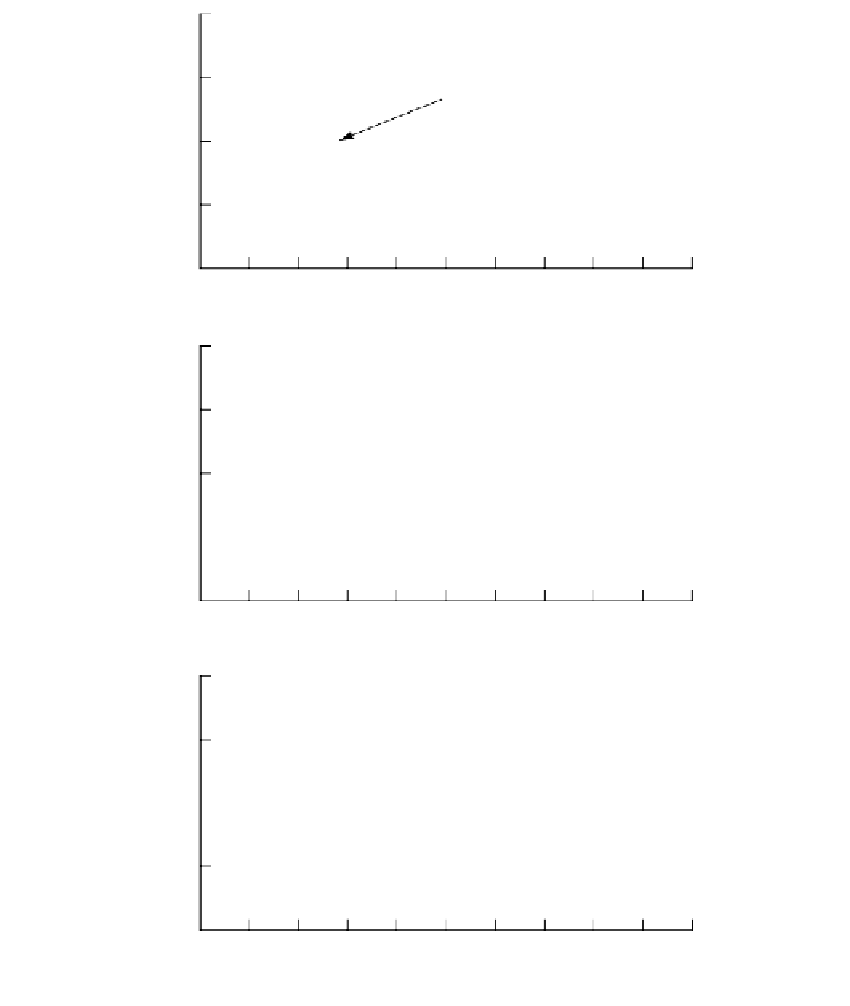Biomedical Engineering Reference
In-Depth Information
4
2
0.1 M KCI
0
−
2
0.1 M Na citrate
−
4
0 0 0 0 0 0 0 0 0 0 0
Time (
µ
s)
(A)
20
10
0
−
10
−
20
0 0 0 0 0 0 0 0 0 0 0
Time (
µ
s)
(B)
4
2
0
−
2
−
4
0 0 0 0 0 0 0 0 0 0
100
Time (
µ
s)
(C)
FIGURE 15.16
Photoelectric signals from reconstituted halorhodopsin (hR) thin films. (A) The change of the photosignal, meas-
ured from a TM film, was reversible, when the aqueous solution was changed from KCl (pH 6) to sodium citrate
(pH 6) and vice versa.
H
1
and
H
2
components have opposite polarities: positive and negative, respectively. (B)
Photosignals from an ML film (
H
1
component only) in KCl (pH 7) and in sodium citrate (pH 6), before stripping
with a cotton swab, are shown to be superimposable. (C) Corresponding photosignals, after stripping with a cot-
ton swab, are also shown to be superimposable. All measurements were made at 25ºC. (From Michaile, S.,
Duschl, A., Lanyi, J. K., Hong, F. T. (1990). Chloride ion modulation of the fast photoelectric signal in
halorhodopsin thin films. In:
Proceedings 12th Annual International Conference of IEEE Engineering in Medicine and
Biology Society.
Philadelphia, PA, November 1-4, pp. 1721-1723.)
charge transfer contributes to the net transmembrane charge transport (DC photoelectric
effect). The universal presence of reverse reactions in photobiological membranes also
implies the universal presence of either the OD or the ICT mechanism. It is true that the
OD-type charge separation-recombination in the reaction center does not span the entire







